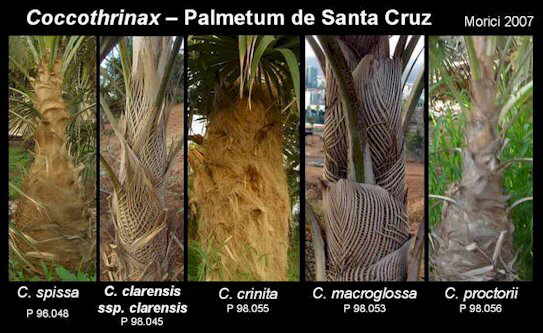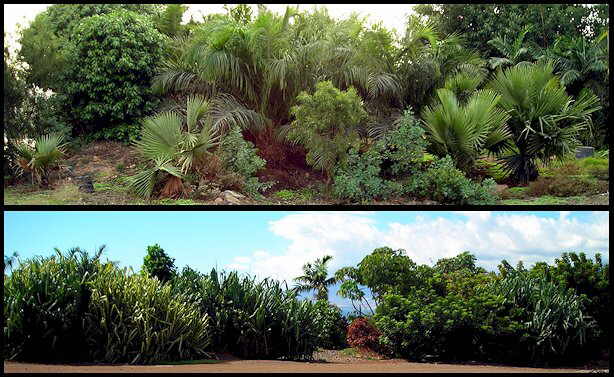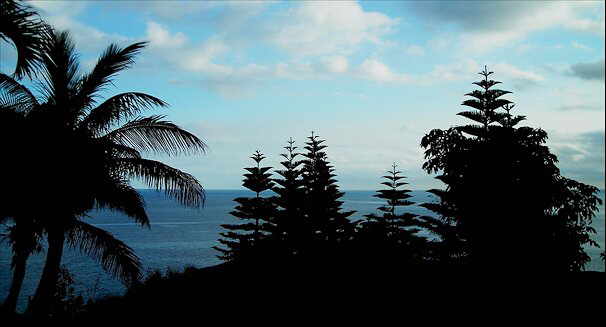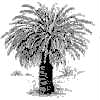|
Places
The Jardin Botanico del Palmetum de Santa Cruz |
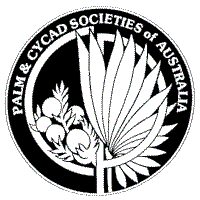
| |||
|
| ||||
|
Part III - Collections and Gardens
Collections Overview
More important than the amount, the species represented emphasize their value. Between all plants, 132 distinct plant families are present that constitute priority material. 72 taxa are also on the threatened species list of the IUCN. There are palms different from those commonly used in gardens, having great didactic value, such as, the slow growing Bottle Palm, or the climbing palms that are used to produce rattan. At least five palm species represented in the Palmetum are found in another botanical garden, while one or two may not be found in cultivation in any other place in the world. The collection of Caribbean palms is the fruit of expeditions from some of the members of the Palmetum. It includes a great diversity of species, with the majority of the palms planted in the ground. Many are a product of in-habitat collection, arriving from exchanges with the official institutions of various Caribbean countries. Some accessions are also the living result of botanical expeditions and herbarium material of the wild mother plants is deposited in different herbaria of the world.
Besides palms, many unusual trees are becoming taller each year. The largest tree of the botanical garden is a majestic Ficus religiosa which has surpassed 15 m in height. People are often surprised by the presence of the baobabs that we germinated in 1996 (Adansonia grandidieri and A. digitata ), and the adult mangroves (Rhizophora mangle ), planted in the main lake and already resting on their typical stilt-roots, producing their curious torpedo-shaped floating fruits. There are uncommon fruit trees such as cacao (Theobroma cacao ) or breadfruits (Artocarpus camansii ). There are about 50 New Caledonian Araucaria columnaris , planted from the top of the hill down to the sea, collected in habitat by C. Morici in late 2000. There is a 4 m tall individual of a possible new species of Consolea, a tree-cactus which is still waiting to be studied and described.
Sources of Specimens in the Collection
A) Imported juvenile and adult palms from specialized nurseries in Florida, So.Africa and Cuba.
Importation of adult plants provided from commercial nurseries followed the quarantine rules set by the phytosanitary service. The importation of seeds was mediated by the scientific instututions of the countries of origin and the corresponding import/export permits for non commercial use were obtained.
Priority Species
A) 72 of them are species included in the IUCN red list:
B) 25 Species rare in cultivation
C) 53 Species slow and therefore rare Some taxa are grown in sufficient number to allow ex situ seed production of IUCN species. An outstanding case is Coccothrinax borhidiana O. Muiz, which is a slow and Critically Endangered species (IUCN: CR B1+2c) represented by 17 ten-year-old specimens planted in the Caribbean section and a few more in pots.
The surface of the hill is divided into 14 Biogeographical Sections, in order to represent and display the different palm floras of the globe. Geographic/Habitat divisions are a modern trend in botanic gardens landscape design for the highly didactical value and it is also considered aesthetically pleasing. The sections are dedicated to: Madagascar, New Caledonia, Hawaii, Melanesia, Mascarene Islands, Australia and Lord Howe, Canary Islands, Caribbean Islands, New Guinea, Borneo and Philippines, Indochina, South America, North and Central America, africa. The road entering the mountain has a medley of palms species from all over the world. The Octagon is not separated as distinctly as the rest of the garden, instead being roughly divided by new world and old world species. It is also the location for the six species endemic to the Seychelles. Each section looks different. Some sections are crossed by streams or ponds, while the section for Madagascar has a lawn. The Canarian section is located on a slope, at the entrance. All the remaining sections lay on the flat top of the hill, but some of them also include a part of the mountain slopes and extends down to the sea. The largest and richest section is the Caribbean, which hosts most of the species classified as Priority Material.
South America
It contains the richest collection of the Palmetum and a comprehensive collection of the genus Coccothrinax. Almost all the West Indian palms gave good results. The largest palms of this section are surely Roystonea regia , Sabal palmetto , Acoelorraphe wrightii and Cocos nucifera , which form huge masses with trunks of various meters. There are different species of Copernicia showing splendid sculptural leaves. C. berteroana and C. hospita have been fruiting regularly since 2004 and four imposing specimens of C. baileyana tower in the centre of the area: the largest attains 6 m and it is starting to show some trunk. Copernicia ekmanii germinated from seeds collected at Fairchild Tropical Botanic Garden in Miami in 1997 are now 1,80 m tall with beautifully glaucous leaves. The peculiar Eastern-Cuban form of Copernicia rigida collected in 1995 by Morici is still about 1 m tall, 12 years later. Many species of Coccothrinax are still kept in pots but some are in the ground: the largest mass plantings correspond to C. proctorii , C. gracilis , C. spissa , C. borhidiana . Other species planted in smaller groups are Coccothrinax crinita , C. clarensis , C. camagueyana and the three subspecies of C. miraguama . There are isolated specimens of Coccothrinax moaensis , C. salvatoris and others. The great majority of the Coccothrinax specimens has a documented origin and was collected as seed in habitat. There is a group 11 of Gaussia princeps and some with a trunk, grown from seeds collected in the wild in late 1996. Three Gaussia attenuata grow on a slope. Three healthy Acrocomia aculeata attain 5 m in height. They were donated as small seedlings by the Jardin Botanico de Santo Domingo in 1997 and they belong to the Dominican populations, formerly named Acrocomia quisqueyana . Two Pseudophoenix sargentii have been fruiting since 2004 and one of the two Zombia antillarum already has a 2 m tall trunk. There are various specimens of Syagrus amara , the only palm species endemic to the Lesser Antilles. There are Hemithrinax ekmaniana and Hemithrinax compacta : slow Cuban beauties which are just 25 cm tall at 10 years of age. Two Cuban belly palms, Acrocomia crispa , have produced their 3 m tall trunks in less than two years. Different dicotyledonous trees grow in the area, especially in the lower part of the section. There are Cordia sebestena , Hibiscus elatus , Guayacum officinalis , Simarouba berteroana and S. glauca . There are also trees and shrubs collected as seeds from the northern coast of Guantanamo: Sterculia apetala , Glycosmis pentaphylla , Philodendron lacerum . The slopes host more trees: Bombacopsis cubensis , Bursera simaruba and 50 specimens of the palm Coccothrinax gracilis , from seeds collected at Cabo Samana, in the Dominican Republic. Some recent additions to the collection are Roystonea lenis and the recently described species Coccothrinax torrida , collected in Imias, Cuba by Dr. Raul Verdecia.
Relatively few palm species exist in Africa and fewer are represented in the Palmetum. Various young Borassus aethiopum grew slowly but their leaves already now attain 4 m, three of them were germinated from seeds collected at the Jardin Botanico de Cienfuegos, in Cuba and two were purchased to private nurseries in Florida. A Jubaeopsis caffra flowered for the first time in 2004 and set the first viable seeds in July 2007. Dozens of Elaeis guineensis have bloomed and fruited since summer 2000. In 2007 we added various individuals of Hyphaene coriacea , one Aloe barberae , two Aloe dichotoma and various Cycad species in the Southern slopes. Other trees planted in this section are: Acacia albida , Acacia salicina , the edible Pappea capensis , Ficus sur , F. natalensis , a row of Ficus salicifolia collected by Giuseppe Orlando in Salalah, Oman and African baobabs (Adansonia digitata ) from seeds collected in Gambia. Many Chamaerops humilis var. cerifera, native to Morocco, are planted out of the section, along the main road at the entrance. There were two Raphia australis that grew impressively during years but were killed by a drought in 2007. Between the years 2001 and 2003 they grew from a height of just 2 m to an impressive 7 m. Their exceedingly long leaves had brightly coloured orange rachises. We hope that the Palmetum will soon come to a new life in order to replace the lost species and plant in the ground many other palm species native to Africa.
It is a young space, planted at the end of the year 2000. The established palms are one Ponapea hosinoi, different Pritchardia pacifica and various species of Veitchia and a small Neoveitchia storckii , planted in September 2007. Groups of Pritchardia thurstonii are planted on the slopes belonging to this section. Other interesting species not included in the palm family are: the Noni, Morinda citrifolia , the breadnuts or seeded breadfruits, Artocarpus camansi , two large Pandanus pyriformis , germinated from seeds distributed by the Palmengarten of Frankfurt in 1998 and a tree of Erythrina variegata orientalis, which is the upright-branching erythrina that it is often planted as a windbreak in the pacific islands because of its columnar growth.
The relatively small archipelago is home to an especially interesting tropical flora. 37 palm species, with all of them being endemic. This section was designed in 2000-2001 and includes four Kentiopsis oliviformis and many Chambeyronia macrocarpa . The oldest Chambeyronia started blooming in 2007. In August 2007 we planted one Burretiokentia hapala collected in Vallee de Palmiers, one specimen of the local form of Chambeyronia from Houailou and the fist specimens of the local form with yellow crownshaft, originally collected in the region of Ba and initially named Chambeyronia hookeri . It sprouted from a seed donated in 2000 by the Asociation Chambeyronie of New Caledonia during the biennial meeting of the International Palm Society. There are various plants grown from wild collected material: some specimens of the large solitary form of Crinum asiaticum , Acacia simplex , Hernandia ovigera , Ficus cf. habrophylla , about 50 trees of Araucaria columnaris , and more.
Just one palm genus, Pritchardia, grows naturally in the Hawaiian island, with more than 20 species endemic to the archipelago. These palms grow especially well and fast in the Canary Islands. There are five species in the ground, planted in natural groups of mature specimens and more species represented by juveniles in pots. Pritchardia minor is possibly the most attractive species, with particularly small leaves with white tomentum. There is a group of the endangered Pritchardia munroi raised from the seeds donated by Jardin Botanico Canario Viera y Clavijo, in Gran Canaria, which is one of the few places in the world where pure seeds of this species are available. Some popular trees endemic to Hawaii are thriving in this section, such as two large specimens of Acacia koa , a small tree of Hibiscus arnottianus var. inmaculatus and a row of adult Erythrina sandwicensis grown from seeds collected in Maui by Brian Bruning. Other plants growing in this section are Musa sumatrana var. zebrina, Piper methysticum (awa or kava-kava), Cocos nucifera and Syzygium sp . (water-apple tree).
The area is dominated by tall specimens of Wodyetia bifurcata , which started blooming in 2004 and Livistona decora which grew at the impressive rate of 1,5 m of trunk per year and have been producing seeds regularly since 2003. There are different species of Ptychosperma, Livistona and Archontophoenix and three large juveniles of Corypha utan . Some uncommon Livistonas are represented with only one specimen of Livistona mariae , two L. fulva and two L. lanuginosa , often loaded with black large fruits. Other Australian species have been recently (2007) planted on the slopes at the entrance of the Palmetum. These are L. nasmophila and L. nitida . The palms of Lord Howe are represented by the two kentias: Howea forsteriana and Howea belmoreana .
A large specimen of Ficus religiosa towers above anything else, because it is the largest tree in the botanical garden. The largest palms belong to the genus Arenga: there are two A. pinnata , producing large-sized leaves about 10 m long, and three imposing Arenga westerhoutii , planted in 2001. A long and dense hedge of Arenga engleri has been producing fruits since 2004 and three trunkless Corypha umbraculifera have started to grow steadily. These palms flower just once after a long life and commit suicide in the name of reproduction. We all dream to live long enough to see them bloom and die. Five Wallichia disticha show perfect fans, with one of them starting to bloom in the summer of 2007. This fan-shaped palm with distichously arranged leaves, dies after blooming, but in Wallichia this happens much earlier. W. disticha is probably the shortest lived of all palms and some juveniles growing in pots will soon replace the dying specimens. One large Bentickia nicobarica is now thriving after an unlucky start on the formerly desert mountaintop. There are various specimens of Livistona saribus , L. chinensis , L. rotundifolia and Licuala spinosa . Some dicotyledonous trees growing in the area are: Barringtonia asiatica , Bombax ceiba .
This small space hosts specimens of Hyophorbe lagenicaulis , H.indica , H.verschaffeltii , Latania loddiggesii , L. verschaffeltii and Dictyosperma album . All are adult fruiting adults except H. indica that is younger, planted in 2001. The only specimen of Acantophoenix died in a drought in Summer 2004.
Madagascars palm flora is very diverse and highly endemic. There are approximately 180 different palm species belonging to 16 genera. The collection at the Palmetum is poor if compared to the entire palm diversity existing in Madagascar. This section stretches between the Octogon and the palm museum. It includes a large lawn with palms where visitors can walk freely, part of the main lake, some slopes and blank space that will be planted with evergreen trees in order to provide shade for understorey palms. The majestic sight of the immense group of blue Bismarckia nobilis invites all plant lovers to stop there for a rest to be delighted by their beauty. Blooming started in 2003 but only male specimens produced inflorescences. The following year females joined, and in autumn 2004 the first viable fruits were ready.In the main lawn there are many clumping Dypsis cabadae , fruiting since mid 2004. Tall specimens of Dypsis leptocheilos and D. madagascariensis started to flower in 2004. A promising Ravenea glauca survived throughout the Palmetums bad luck and now has a healthy appearance. One Dypsis cf. ambositrae was planted in 2006 and during the renaissance of 2007 we added some Dypsis decipiens and Ravenea xerophyla . The only dicotyledonous trees are the Malgasy baobab Adansonia grandidieri and Delonix cf. adansonioides. The Malgasy baobab is also represented out of the section by a 180 m long row of trees planted along the ocean, at the bottom of the Southern slope.
This area is dominated by Sabal palmetto , Washingtonia robusta and Acoelorraphe wrightii , imported as large specimens from Florida. Most other palms are young. There are two Sabal mauritiiformis , many S. mexicana and one S. yapa , different species of Brahea, one Attalea cohune and a juvenile Coccothrinax readii : the only Mexican species of this genus which is otherwise typically insular. In 2007 we added Rapidophyllum hystrix . Some specimens of the fine-leaved form of Chamaedorea seifrizii , wild-collected in the semideciduous forest of NW Yucatan by Roger Orellana. Other plants present in the area are Piper auritum , Crescentia cujete , Calliandra sp. , various cycads and more. There are 15 mature Serenoa repens , planted along the main road of this section, grown from seeds collected in 1997 by C. Morici and S. Zona, form the wild population growing in Navy Wells, North of Miami, Florida. Groups of wild-collected Brahea armata growing on the slopes at the entrance are also present in the collection.
It is a large (11.500 m2), northerly exposed, cool slope dedicated to the native flora of the Canary Islands, with special interest in reproducing a Canarian Termophilous Scrubland. The native palm, Phoenix canariensis was often a dominant tree with this type of vegetation, which has been dramatically reduced during the past centuries. This section of the Palmetum hosts many adult specimens of P. canariensis , together with other native species of the genera Apollonias, Dracaena, Phoenix, Euphorbia, Echium, Marcetella, Kleina, Lotus and Argyranthemum . A particularly beautiful sight is the endemic bulb Pancratium canariensis that blooms and fruits profusely. The official nursery of endemic species of the Cabildo of Tenerife is now contributing more species with location data. With luck and perseverance, this Canarian garden will be the best in Santa Cruz de Tenerife, with an immense didactical value for the whole city.
Both sections were started in July 2007 by C. Morici. No vegetation was growing in the area so the goal was to start the canopy trees that will provide shade and shelter in the future. - The section dedicated to the flora of Borneo and Philippines (about 3.000 m2) is being planted with Harpullia arborea, from seeds collected at Fairchild Tropical Botanical Gardens of Miami, Cassia sp., Syzygium sp., Arenga pinnata and Adonidia merrillii . The ICIA (Instituto Canario de Investigaciones Agrarias) will soon donate specimens of Salacca, Mangifera and Clausena , raised at their tropical fruit tree collection, so possibly a Salacca zalacca will be the first palm to be planted in the ground. - The New Guinean section (about 4.000 m2) includes a large deep lake in the center, which is currently without water. The area is area planted with Schefflera actinophylla , Barringtonia asiatica , Flacourtia inermis and Hibiscus tiliaceus . There are many individuals of Thespesia populnea and Cocos nucifera , one Canarium oleosum and two different cultivars of the breadfruit tree, named Maafala and Maopu. Besides coconut trees, the only two New Guinean palm species for this area are Salacca sp., Areca macrocalyx and Livistona benthamii . More will hopefully follow in the next years, once the canopy trees begin to grow larger.
The Octagon
Many species from other families were planted in the octagon. Some interesting thriving survivors are the different species of Ficus, such as F. auriculata , the shrubby F.erecta and F. aspera var. parcellii, the palm-like plant Carludovica palmata , the inmense Philodendron giganteum originally collected by Morici on the island of Nevis, the tropical forest tree Duabanga grandiflora , a white flowered Bauhinia sp ., an Oreopanax sp ., a small Heliconia collection and two unidentified trees, donated by the Jardin Botanico de Aclimatacion de La Orotava, located in Northern Tenerife.
<<< History And Future Of The Project
| |||||||||||||||||||||||
